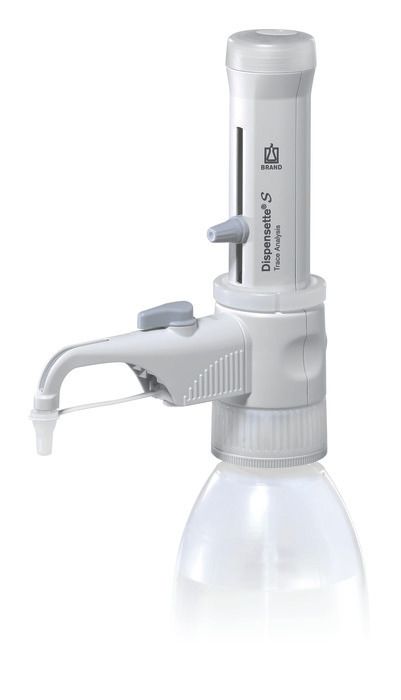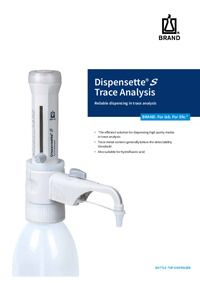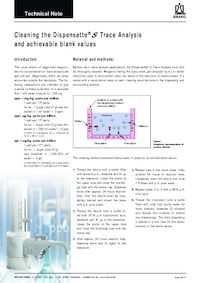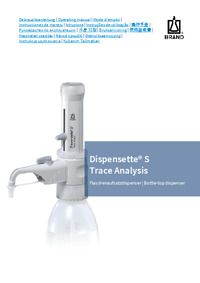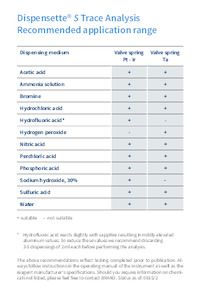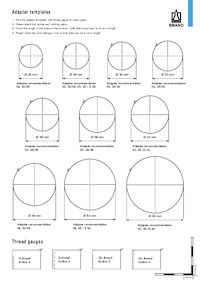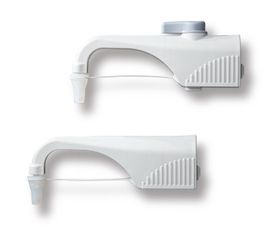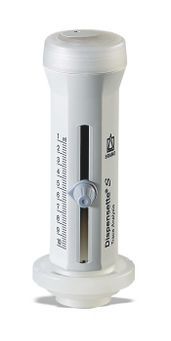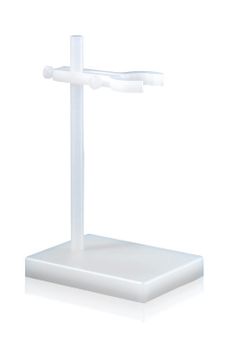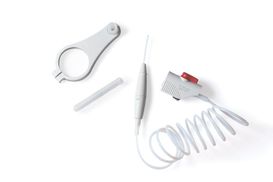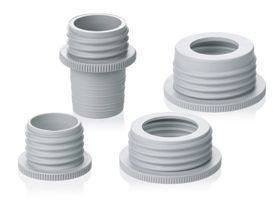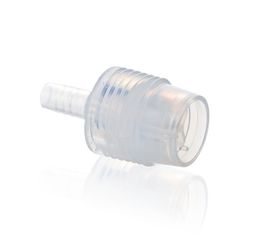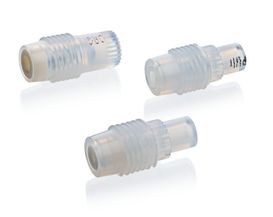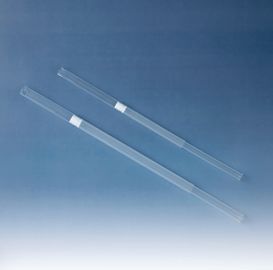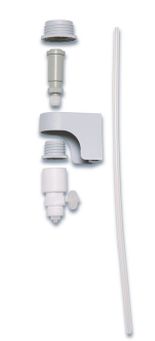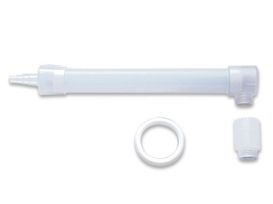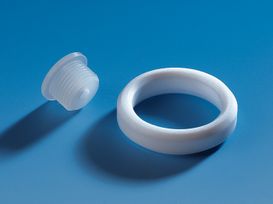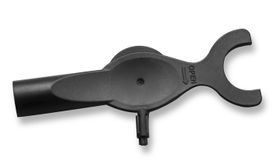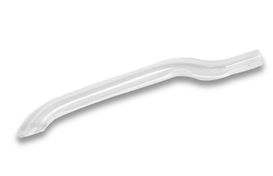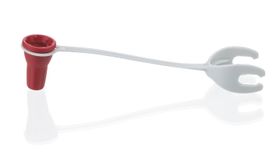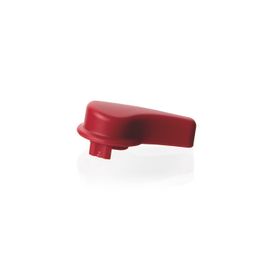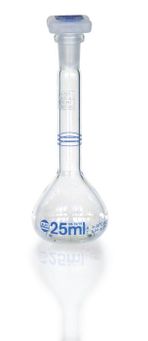Bottle-top dispensers Dispensette® S Trace Analysis, analog-adjustable, DE-M
Choose your product:
| Cat.-No. | Volume range | Subdivision | Accuracy in % (±) | Accuracy in µl (±) | Coefficient of variation (%) | Coefficient of variation (µl) | Recirculation valve | Valve material |
|---|---|---|---|---|---|---|---|---|
| 4640040 | 1 ml - 10 ml | 0.2 ml | 0.5 % | 50 µl | 0.1 % | 10 µl | without | PT/IR |
| 4640041 | 1 ml - 10 ml | 0.2 ml | 0.5 % | 50 µl | 0.1 % | 10 µl | with | PT/IR |
| 4640240 | 1 ml - 10 ml | 0.2 ml | 0.5 % | 50 µl | 0.1 % | 10 µl | without | tantalum |
| 4640241 | 1 ml - 10 ml | 0.2 ml | 0.5 % | 50 µl | 0.1 % | 10 µl | with | tantalum |
| Price per | Price | |||
|---|---|---|---|---|
Product Detail
The Dispensette® S Trace Analysis provides outstanding performance for precise volume dispensing of high-purity media for trace analysis. Also suitable for HF with platinum-iridium valve spring.
Plastics in contact with media consist of high-purity materials such as PTFE, ETFE, FEP, and PFA. The purest sapphire is used for replaceable valves. Depending on the application, platinum-iridium or tantalum are available as spring materials.
A field-tested cleaning process before use in trace analysis is described in the operating manual.
If contamination of the bottle contents must be avoided, we recommend using the device without the recirculation valve.
The 45 mm standard thread plus the included adapters fit most common lab bottles.
The valve block can be rotated 360° so that the bottle label always faces the user for safety.
Telescoping filling tube adjusts to different bottle sizes.
Easy disassembly for replacement of the dispensing cartridge.
Items supplied
Dispensette® S Trace Analysis bottle-top dispenser, for threaded bottles GL 45, DE-M marking, performance certificate, telescoping filling tube, recirculation tube (optional), mounting tool and bottle adapters GL 28-S 28 (ETFE), GL 32 (ETFE) and S 40 (PTFE).
 für Zoom klicken
für Zoom klicken
Videos


Related Products
| Cat.-No. | Volume range | Subdivision | Accuracy in % (±) | Accuracy in µl (±) | Coefficient of variation (%) | Coefficient of variation (µl) | Recirculation valve | Valve material |
|---|---|---|---|---|---|---|---|---|
| 4640040 | 1 ml - 10 ml | 0.2 ml | 0.5 % | 50 µl | 0.1 % | 10 µl | without | PT/IR |
| 4640041 | 1 ml - 10 ml | 0.2 ml | 0.5 % | 50 µl | 0.1 % | 10 µl | with | PT/IR |
| 4640240 | 1 ml - 10 ml | 0.2 ml | 0.5 % | 50 µl | 0.1 % | 10 µl | without | tantalum |
| 4640241 | 1 ml - 10 ml | 0.2 ml | 0.5 % | 50 µl | 0.1 % | 10 µl | with | tantalum |
| Price per | Price | |||
|---|---|---|---|---|
Product Detail
The Dispensette® S Trace Analysis provides outstanding performance for precise volume dispensing of high-purity media for trace analysis. Also suitable for HF with platinum-iridium valve spring.
Plastics in contact with media consist of high-purity materials such as PTFE, ETFE, FEP, and PFA. The purest sapphire is used for replaceable valves. Depending on the application, platinum-iridium or tantalum are available as spring materials.
A field-tested cleaning process before use in trace analysis is described in the operating manual.
If contamination of the bottle contents must be avoided, we recommend using the device without the recirculation valve.
The 45 mm standard thread plus the included adapters fit most common lab bottles.
The valve block can be rotated 360° so that the bottle label always faces the user for safety.
Telescoping filling tube adjusts to different bottle sizes.
Easy disassembly for replacement of the dispensing cartridge.
Items supplied
Dispensette® S Trace Analysis bottle-top dispenser, for threaded bottles GL 45, DE-M marking, performance certificate, telescoping filling tube, recirculation tube (optional), mounting tool and bottle adapters GL 28-S 28 (ETFE), GL 32 (ETFE) and S 40 (PTFE).
 für Zoom klicken
für Zoom klicken
Videos



